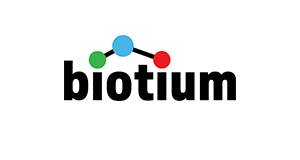c-Myc(MYC699), 0.2mg/mL
c-Myc(MYC699), 0.2mg/mL
Artikelnummer
BTMBNUB0699-500
Verpackungseinheit
500 uL
Hersteller
Biotium
Verfügbarkeit:
wird geladen...
Preis wird geladen...
Description: The c-Myc protein is a transcription factor, which is encoded by the c-Myc gene on human chromosome 8q24. c-Myc is commonly activated in a variety of tumor cells and plays an important role in cellular proliferation, differentiation, apoptosis and cell cycle progression. The phosphorylation of c-Myc has been investigated and previous studies have suggested a functional association between phosphorylation at Thr58/Ser62 by glycogen synthase kinase 3, cyclin dependent kinase, ERK2 and C-Jun N terminal Kinase (JNK) in cell proliferation and cell cycle regulation. Studies also have shown that c-Myc is essential for tumor cell development in vasculogenesis and angiogenesis that distribute blood throughout the cells, and which brought extensive attention in the development of new therapeutic approach for cancer treatment.Primary antibodies are available purified, or with a selection of fluorescent CF® Dyes and other labels. CF® Dyes offer exceptional brightness and photostability. Note: Conjugates of blue fluorescent dyes like CF®405S and CF®405M are not recommended for detecting low abundance targets, because blue dyes have lower fluorescence and can give higher non-specific background than other dye colors.
Product Origin: Animal - Mus musculus (mouse), BSA from bovine serum (Bos taurus) or recombinant BSA produced in Chinese hamster ovary cells.
Conjugate: Purified, with BSA
Concentration: 0.2 mg/mL
Storage buffer: PBS, 0.05% BSA, 0.05% azide
Clone: MYC699
Immunogen: A synthetic peptide, corresponding to aa 408-439 (AEEQKLISEEDLLRKRREQLKHKLEQL-RNSCA) from C-terminus of human c-myc, coupled to KLH
Antibody Reactivity: c-Myc
Entrez Gene ID: 4609
Antibody Application Notes: For coating for ELISA, order Ab without BSA/Higher concentration may be required for direct detection using primary antibody conjugates than for indirect detection with secondary antibody/Optimal dilution and staining procedure for a specific application should be determined by user/Recommended starting concentrations for titration are 1-2 ug/mL for most applications, or 1 ug/million cells/100 uL for flow cytometry/Does not react with mouse; others not known
Product Origin: Animal - Mus musculus (mouse), BSA from bovine serum (Bos taurus) or recombinant BSA produced in Chinese hamster ovary cells.
Conjugate: Purified, with BSA
Concentration: 0.2 mg/mL
Storage buffer: PBS, 0.05% BSA, 0.05% azide
Clone: MYC699
Immunogen: A synthetic peptide, corresponding to aa 408-439 (AEEQKLISEEDLLRKRREQLKHKLEQL-RNSCA) from C-terminus of human c-myc, coupled to KLH
Antibody Reactivity: c-Myc
Entrez Gene ID: 4609
Antibody Application Notes: For coating for ELISA, order Ab without BSA/Higher concentration may be required for direct detection using primary antibody conjugates than for indirect detection with secondary antibody/Optimal dilution and staining procedure for a specific application should be determined by user/Recommended starting concentrations for titration are 1-2 ug/mL for most applications, or 1 ug/million cells/100 uL for flow cytometry/Does not react with mouse; others not known
| Artikelnummer | BTMBNUB0699-500 |
|---|---|
| Hersteller | Biotium |
| Hersteller Artikelnummer | BNUB0699-500 |
| Verpackungseinheit | 500 uL |
| Mengeneinheit | STK |
| Reaktivität | Human, Primate, Various species |
| Klonalität | Monoclonal |
| Isotyp | IgG1 kappa |
| Wirt | Mouse |
| Konjugat | Unconjugated |
| Produktinformation (PDF) | Download |
| MSDS (PDF) | Download |

 English
English







